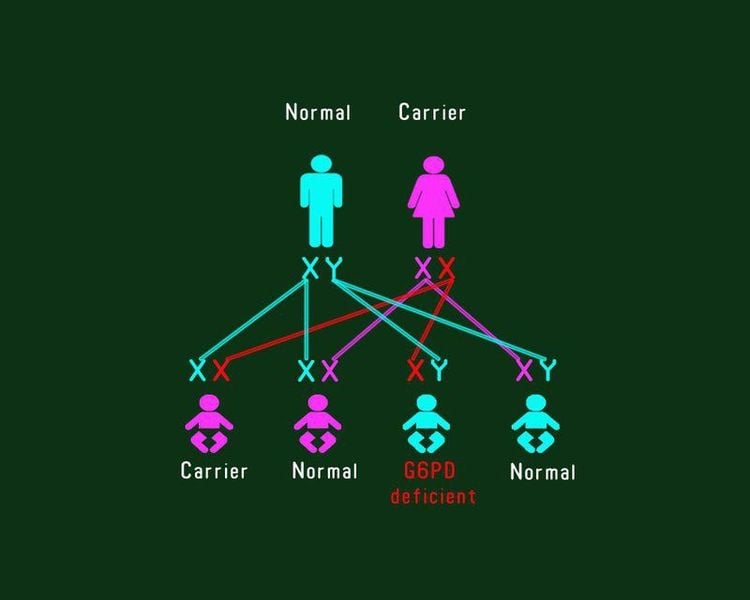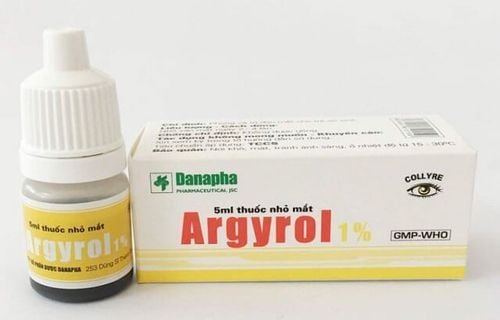This is an automatically translated article.
About 400 million people worldwide suffer from G6PD enzyme deficiency disease, South-Asia is one of the regions with a relatively high prevalence of 3-5%. G6PD enzyme deficiency is a sex-linked (X-chromosome) genetic disease, so males are more likely to develop it than females.1. What is G6PD enzyme deficiency disease?
G6PD enzyme deficiency disease (Glucosa-6-Phospate Dehydrogenase) is an X-linked recessive genetic disease and is common in boys, rarely in girls. A mother carrying a disease gene can pass it on to her son, a daughter rarely gets the disease only when both parents carry the disease gene.
G6PD enzyme deficiency disease has different incidence rates between countries, but Vietnam is located in the epidemiological area of Southeast Asia, G6PD genetic disease is common, the prevalence of G6PD enzyme deficiency in our country is 0.4-9 .1%, depending on the Kinh or the ethnic minority.
G6PD enzyme is a factor that helps red blood cells avoid the oxidative effects of some drugs and foods. If the body lacks G6PD enzyme, unstable red blood cells are easily broken and cause acute or chronic hemolysis leading to to anemia.
On the other hand, when red blood cells are broken, they will release free bilirubin, this substance cannot be eliminated as usual and remains in the blood, causing jaundice in newborns, yellow eyes and worse, absorbed into the brain causing yellowing. Keratosis and cerebral palsy
G6PD deficiency is an inherited disease, but if detected and treated early, children can live and develop normally.

Mẹ mang gen bệnh có thể di truyền cho con trai, con gái hiếm gặp chỉ bị bệnh khi cả bố và mẹ đều mang gen bệnh
2. Manifestations of G6PD . enzyme deficiency disease
G6PD enzyme deficiency disease has the following common manifestationsChildren who stop breastfeeding Children with dark yellow urine Children have yellowing of the skin and eyes. The body is tired, the skin is pale and sweaty, and the limbs are cold and easily dizzy.
3. Method to detect G6PD enzyme deficiency in newborns
Screening for G6PD enzyme deficiency: 1-2 days after birth, blood from the heel or veins will be taken to test for G6PD. The results will be communicated to the family as soon as possible. If the G6PD test result is < 200 IU / 10^12 HC, the baby will be re-examined and have a blood count test and G6PD enzyme activity measured. lack of G6PD enzyme, Vinmec hospital will advise:Analyzing and finding G6PD disease genes for children and families How to take care of children and avoid using some harmful drugs and foods for children

Trẻ sau khi sinh 1-2 ngày sẽ lấy máu gót chân hoặc ven để làm xét nghiệm G6PD
4. How to take care of children lacking G6PD enzyme?
Children can live peacefully, without the consequences of hemolytic anemia caused by G6PD deficiency by the following methods:When giving medicines to children, parents need to consult a doctor, avoid using drugs , food, chemicals that cause hemolysis. When children have infectious diseases, it is necessary to see a doctor for timely treatment. prevent adverse reactions after taking certain drugs that can cause hemolysis.

PGS.TS, Thầy thuốc Nhân Dân Nguyễn Thị Hoàn - Tác giả của Chương trình sàng lọc sơ sinh tại Bệnh viện Vinmec Times City
Please dial HOTLINE for more information or register for an appointment HERE. Download MyVinmec app to make appointments faster and to manage your bookings easily.













